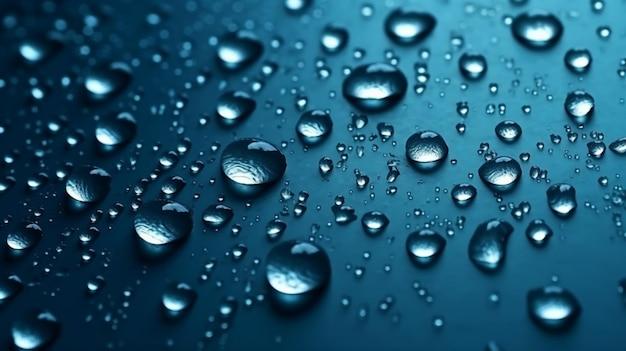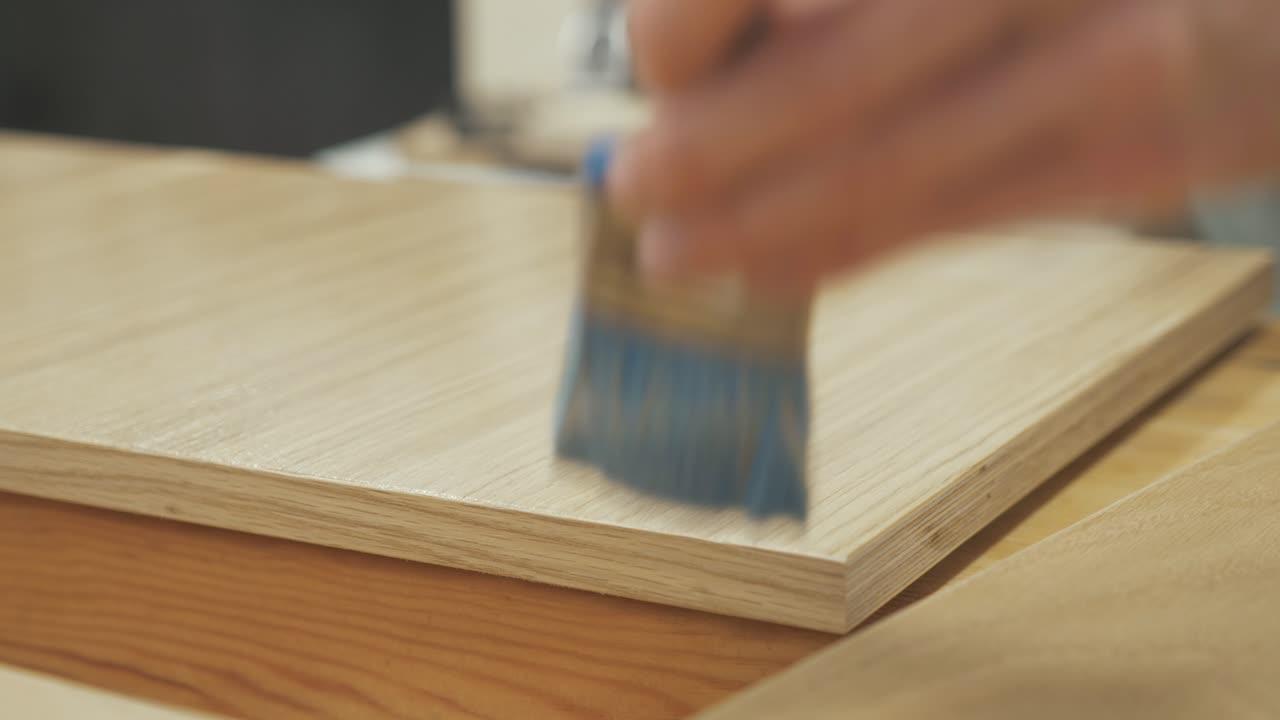Polycrylic is a popular choice for protecting and enhancing the beauty of wood surfaces. If you’re wondering whether Polycrylic is waterproof and offers the level of protection you need, you’ve come to the right place. In this blog post, we’ll explore the waterproof properties of Polycrylic and provide answers to commonly asked questions about its usage.
If you’ve ever used Polycrylic or are considering using it for your next project, you may have wondered about its ability to withstand water damage. We’ll delve into the topic and address important queries such as whether Polycrylic protects against water, if it’s suitable for outdoor use, and how it holds up when exposed to the elements over time.
So, join us as we uncover the truth about Polycrylic’s waterproof capabilities, learn how to achieve a smooth finish, troubleshoot any problems that may arise, and discover the ideal applications for this versatile protective finish.
Is Polycrylic Waterproof
Polycrylic is a popular choice for protecting and sealing wood surfaces. But when it comes to waterproofing, many people wonder if polycrylic does the trick. In this article, we’ll uncover the truth about whether polycrylic is waterproof or not. So grab your reading glasses and let’s dive in!
The Nitty-Gritty on Polycrylic Waterproofing
What is Polycrylic?
Before we get into the waterproofing aspect, let’s make sure we’re all on the same page about what polycrylic actually is. Polycrylic is a water-based protective finish that is primarily used on wood surfaces. It provides a clear and durable coating that enhances the beauty of the wood while offering protection against scratches and general wear and tear.
Waterproof or Water-Resistant?
Now, let’s address the million-dollar question: is polycrylic truly waterproof? Well, the short answer is no. Polycrylic is not completely waterproof. It is more accurate to describe polycrylic as water-resistant. While it can withstand small amounts of water exposure, it is not designed to be submerged or exposed to heavy moisture for extended periods.
Small Splashes and Spills? No Problem!
If you’re looking for a finish that can handle the occasional water spill or splashes, polycrylic will have your back. It forms a protective barrier that prevents water from penetrating the wood immediately. So, accidentally spilling your cup of morning coffee on your polycrylic-sealed coffee table won’t immediately spell disaster. Just make sure to wipe up any spills or moisture as soon as possible to prevent any potential damage in the long run.
Bathroom Humidity? Proceed with Caution!
Now, here’s where things get a little tricky. Bathrooms can be moisture-filled havens where steam and high humidity reign supreme. If you’re considering using polycrylic in your bathroom, proceed with caution. While it can withstand the occasional shower steam, placing polycrylic on surfaces that are constantly exposed to high levels of humidity may not be the best idea. In these situations, it’s better to opt for a more waterproof alternative, such as marine-grade varnishes or epoxy finishes.
Protecting Like a Pro
If you need to protect your wooden surfaces from water damage, implementing some additional measures is a clever move. Applying multiple coats of polycrylic and ensuring proper surface preparation, such as sanding and cleaning, will improve its water-resistance. Additionally, using silicone or caulk to seal any gaps or joints in the wood will further enhance the water-repelling capabilities of the polycrylic finish.
While polycrylic offers some level of water resistance and can handle minor splashes and spills, it is not completely waterproof. It’s perfect for protecting your wood surfaces from everyday wear and tear, but if you’re dealing with moisture-heavy environments or need full waterproofing, exploring other options might be more suitable. Remember, a little research goes a long way when it comes to choosing the right finish for your specific needs.
So there you have it. Polycrylic: the unsung hero of water resistance, but not quite the superhero of waterproofing.
FAQ: Is Polycrylic Waterproof
Have questions about using Polycrylic as a protective finish? We’ve got you covered! Check out this FAQ-style guide to learn all about Polycrylic and its waterproof properties.
Can I wipe on Polycrylic
Absolutely! Polycrylic is a versatile finish that can be applied using various methods, including wiping. It’s a popular choice for DIYers who prefer a smooth and even application. So, feel free to wipe on Polycrylic with a cloth or applicator of your choice.
Is Polycrylic a waterproof protective finish
While Polycrylic offers excellent protection, it’s not entirely waterproof. It provides a certain level of resistance to water and moisture, making it suitable for everyday use in areas like kitchens and bathrooms. However, prolonged exposure to water can eventually cause damage. If you require a fully waterproof finish, you may want to consider other options, such as polyurethane or epoxy.
Why can’t you use Polycrylic over red mahogany stain
Using Polycrylic over red mahogany stain can result in an undesirable outcome. The reddish hue of the stain can bleed and mix with the clear Polycrylic, leading to a pinkish or blotchy appearance. To avoid this, it’s best to choose a different clear finish that won’t react negatively with the red mahogany stain.
How do you finish Polycrylic
To finish Polycrylic, start by ensuring your surface is clean and completely dry. Then, lightly sand any rough areas to achieve a smooth finish. Wipe away any dust with a damp cloth. Next, apply thin and even coats of Polycrylic, allowing each coat to dry completely before applying the next. Sanding between coats can help achieve a smoother final result. Finally, after the last coat has dried, you can buff the surface gently for added smoothness if desired.
How do you fix Polycrylic problems
Encountering issues with Polycrylic is not uncommon, but don’t worry – most problems have simple solutions. If you notice brush or roller marks after application, consider using a fine-grit sandpaper to smooth them out. For air bubbles, you can carefully brush over the affected area with a light touch to release them. If you encounter stubborn problems like blotches or streaks, you may need to strip the finish and start over. Remember, preparation and patience are key when working with Polycrylic.
Can Polycrylic be used for outdoor projects
Polycrylic is not recommended for outdoor use. While it offers decent protection against everyday wear and tear, it is not designed to withstand the elements. Exposure to rain, sunlight, and temperature fluctuations can cause the finish to degrade prematurely. For outdoor projects, consider using a specifically formulated exterior finish to ensure long-lasting protection.
How many coats of Polycrylic should I apply over chalk paint
Applying two to three thin coats of Polycrylic over chalk paint is generally sufficient. However, the number of coats may vary depending on the desired level of sheen and the specific brand of Polycrylic used. Allow each coat to dry completely before applying the next, and remember to lightly sand between coats for a smoother finish.
Will Polycrylic yellow over white paint
No need to worry about a yellowing effect when using Polycrylic over white paint. Unlike some other finishes, Polycrylic dries to a clear and non-yellowing protective layer, preserving the beautiful white color of your paint over time.
Can I put wax over Polycrylic
While it’s possible to apply wax over Polycrylic, it’s generally unnecessary. Polycrylic is a self-sealing finish that provides sufficient protection on its own. Adding wax on top of Polycrylic may not offer any significant additional benefits and could create an extra maintenance step. However, if you prefer the look and feel of wax, you can still use it as a topcoat, but make sure to apply it directly to the surface without any Polycrylic.

